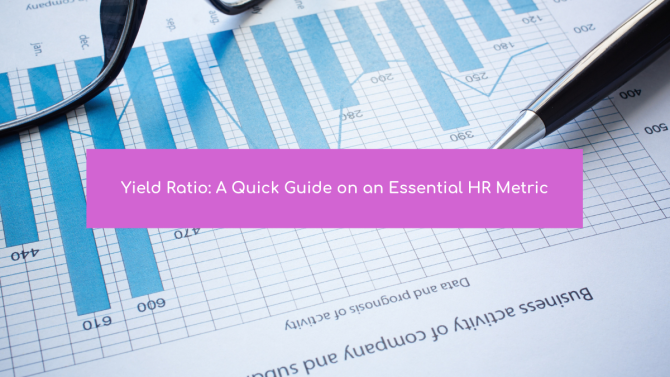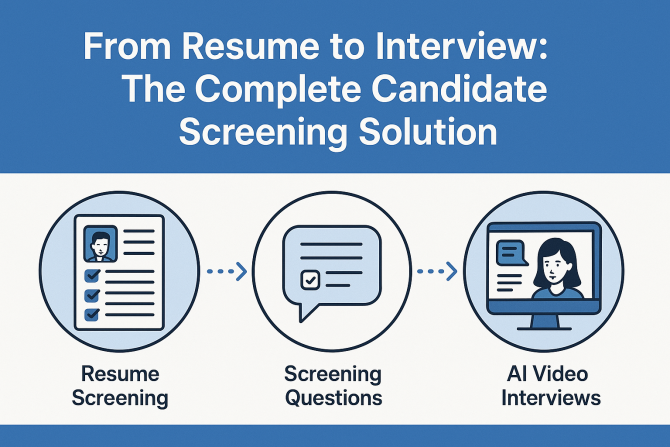
Every marketing specialist is familiar with the sales funnel. It helps to identify the needs of customers and build the right strategy for product promotion. But this technique is not limited to marketing. Today it is effectively used in HRM, allowing you to quickly and accurately analyze each stage of the recruitment process and identify its issues.
Recruitment is a funnel that starts with awareness and ends with signing a contract. By measuring each step’s yield ratio, you can reliably determine the effectiveness of different stages in the funnel.
What Is a Yield Ratio?
There is a misconception that by focusing on enlarging the first stage of the funnel - that is, the incoming flow of applicants - the effectiveness of recruiting increases. This statement can be true in mass recruitment, but not for a targeted qualified search - it will only lead to financial and temporal losses.
Various metrics can be used to measure the effectiveness of the recruiting funnel. There are no unified standards, but the yield ratio has proved to be a reliable indicator. The yield ratio is one of the key performance indicators in human resource management. It evaluates the percentage of candidates who transition from one stage of the recruitment process to another compared to their total number.
The yield ratio is a straightforward and effective method to measure HR funnel effectiveness. Read ahead to find out how to calculate it.
The Yield Ratio Formula
The formula for calculating the yield ratio is simple and looks like this:
The higher the yield ratio, the more applicants have succeeded at a particular recruitment process stage. On the contrary, a low yield ratio means that you might be dealing with irrelevant applications and spending too much time and effort on finding a suitable candidate for the position.
However, it does not mean that the company should be aiming to get a high yield ratio. For instance, the recruitment process could benefit from making the requirements more specific to narrow down the applicants’ specialization. Thus, the more your company’s yield ratio decreases in the long term, the better, as it would signify the implementation of a correct screening approach.
Here is an example of the yield ratio human resources departments may receive at different stages of the recruitment process:
- 15:1 (750 job applications, 50 resumes viewed)
- 5:1 (50 resumes reviewed resulted in 10 candidates submitted to the manager)
- 2:1 (10 selected candidates – down to 5 approved)
- 5:2 (5 initial interviews - to 2 final interviews)
- 2:1 (2 final interviews - to 1 offer)
- 1:1 (1 offer - to 1 hire)
The collected data will help to track the aspects that concern the candidates. Thanks to the yield ratio, you will have more information about market volumes, people’s preferences, and their job expectations.
If you offer job seekers less favorable terms, they are likely to choose another workplace. The search for personnel will be delayed, and the recruiting funnel will narrow, which may provoke financial losses.
Benefits of the Yield Ratio
The yield ratio is an effective evaluation tool used by companies around the world. Here are some of its benefits:
- Hiring costs reduction. If applied correctly, yield ratio data will help companies to invest less time and money into the recruitment process by pointing out specific issues in the funnel.
- Increase in mass recruitment efficiency. Companies that practice mass recruiting thrive when large numbers of people get attracted by their job postings.
- Highlighting signs of bias. Imagine a yield ratio that reveals the fact that only 25% of the interviewed applicants are women. It could be a manifestation of discrimination that needs to be fixed.
Remember that the yield ratio definition is not the only crucial step a recruiter must take, as it cannot be used effectively on its own. It is essential to compare various data received from analytics to make reliable conclusions. Metrics, such as selection ratio, cost per hire, and success ratio, will help you see the bigger picture.
Metrics give HR specialists a hint of the recruitment process’ dynamics. However, one should interpret them with extra care and take effective actions to fix the issues they reveal.





